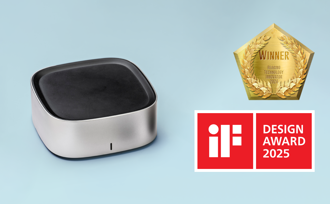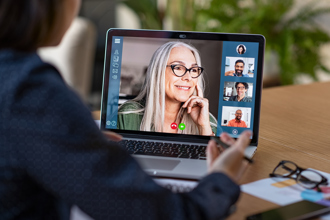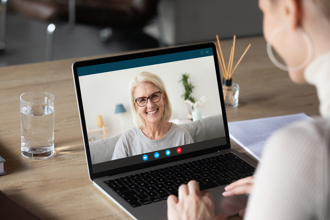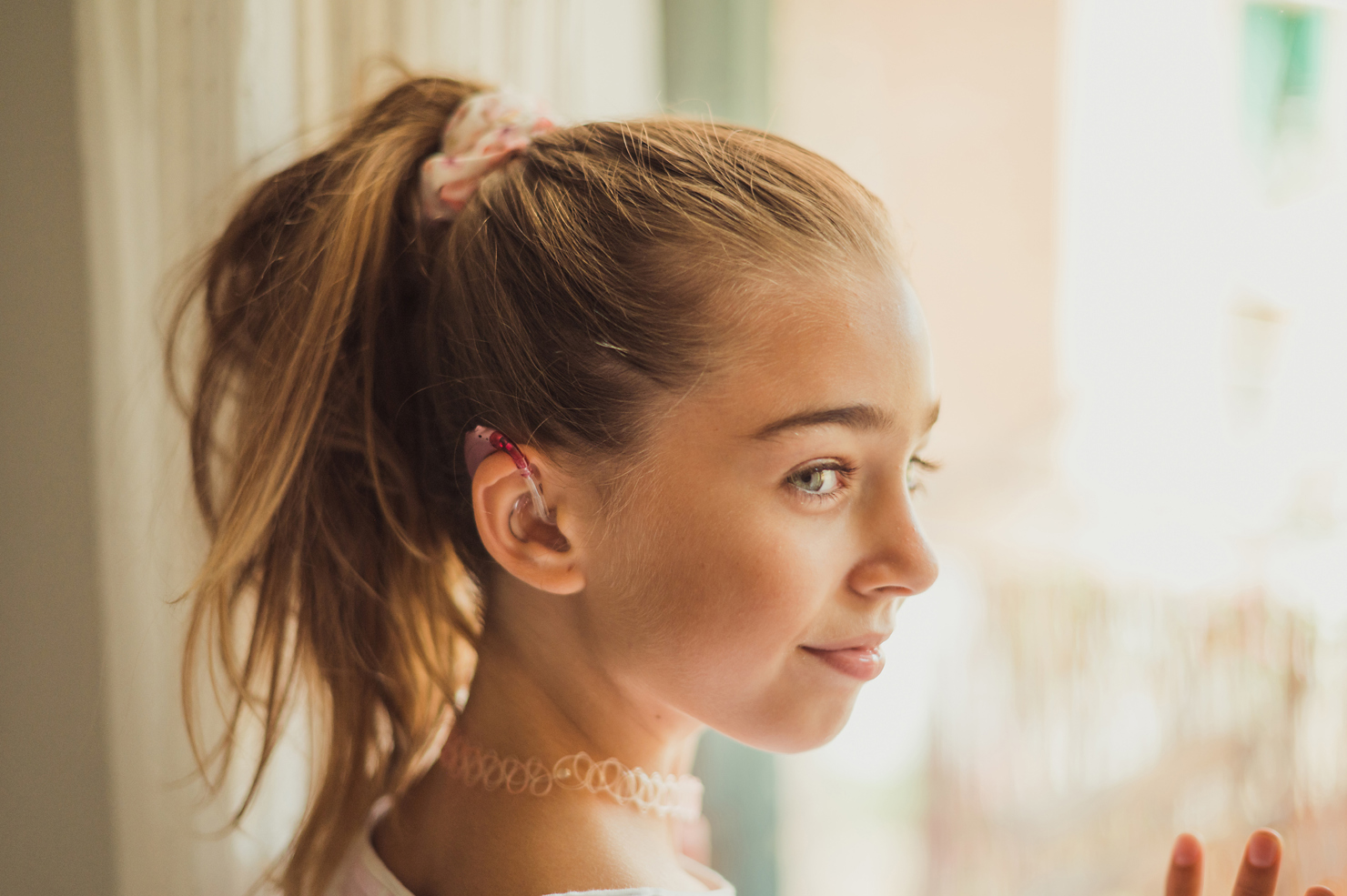
Advertising is Contributing To Hearing Aid Stigma

Hearing aid advertisements are, unfortunately, contributing to the stigma of hearing aids. Only showcasing a specific audience (old, passive, Caucasian people) in hearing aid ads does a great disservice to the many people who don’t fit into this demographic.
For instance, studies show that a billion young people could have hearing loss from listening to loud music, especially through headphones and AirPods. Hearing clinics won’t attract this younger audience with ads that only depict seniors. The images and messaging used in typical hearing aid marketing materials are completely irrelevant to concert-going, music-cranking teens and children, as well as their decision-making parents.
Additionally, there are many people who fall in between the young people listening to loud music and the seniors who may be experiencing age-related hearing loss. It’s important to show how to treat hearing loss at any age, like for students who need to hear their teachers in noisy classrooms and crowded auditoriums. Think of working professionals who are experiencing hearing loss and struggling to participate in work meetings because they can’t hear the conversations properly. Consider people who are working in loud environments – like factories, construction sites, airports, and concert venues – who need hearing protection and screenings for job-related hearing loss.
Sadly, many ad campaigns portray offensive stereotypes, cultural insensitivity, and tone deafness, as well as a shocking lack of diversity. Ads and messaging should be far more inclusive with images and language that represent people of all races, ages, backgrounds, and geographies. Hearing loss happens to a diverse group of people, so hearing aid ads and marketing materials should reflect this. People want to see themselves represented in advertisements, so it’s important to depict a wide range of people living full, active, happy lives with hearing aids.
When you include seniors in your advertising (as you should do), be mindful of how you portray them. Ads that show contempt for older people are still far too common, as ageism persists in advertising. Harmful and unflattering stereotypes about older adults are, unfortunately, still being portrayed. Seniors are often represented in unfair ways in advertising and marketing, depicting them as physically weak, mentally inferior, technologically inept, and completely reliant on others.
To combat these unfair, unflattering, and inaccurate stereotypes – as well as the lack of diversity – in advertising, hearing practices should showcase people of different age groups needing (and wearing) hearing aids. Shifting the way we market audiology services and products will help reinforce that hearing loss affects people of all ages, races, backgrounds, and physical appearances.
Words Matter

What you say – and how you say it – can dramatically impact the customer experience both inside your clinic (during exams) and outside your practice (with your marketing materials). It’s essential to promote a more inclusive and positive experience with words and images across all of your marketing efforts, including ads, your website, social media, brochures, signage, etc.
For instance, when highlighting the small size and discreet positioning of hearing aids, many organizations are implying that hearing aids (and hearing loss) are shameful and should be hidden. This contributes to the stigma around hearing loss and wearing hearing aids. Instead of focusing on the “invisibility” of hearing aids, spotlight the benefits of the devices, the innovative technologies that have improved function and connectivity, the options at various price points, attractive new styles, etc.
Additionally, consider using words like customer, client, consumer, or people with hearing loss instead of “patient” to refer to the people you’re treating in your hearing clinic. The word “patient” could carry a negative association, implying that the people you treat are sick, ill, or have something wrong with them.
Look at the way optical shops market to people with vision impairment – offering a wide variety of stylish, functional glasses – and consider incorporating their best practices into your marketing efforts. The perceptions around wearing glasses are still much different than wearing hearing aids, with far less stigma, embarrassment, or reluctance around needing them. When people shop for eyeglasses, they don’t consider themselves to be “patients.” They consider themselves to be customers, shopping for an accessory. That mindset can make a huge difference in the customer experience. Similarly, shift the mindset in the audiology industry, with language that will help attract new customers and prospects to your clinic.
The Stigma Is Real

Despite the prevalence of hearing loss, many people still worry about the stigma of needing (and wearing) hearing aids. When people feel ashamed of their hearing loss, they may refuse to acknowledge it and/or postpone seeking treatment. That stigma is a big reason why only about 20% of adults that could benefit from hearing aids actually use them.
On average, people wait 7-10 years to do something about their hearing loss, using a variety of excuses to postpone getting hearing aids. Often, people are afraid that hearing aids will make them seem old, weak, or even stupid. They may worry about the cost and think they can’t afford hearing aids. Some people think that getting (and using) hearing aids will be a hassle – or won’t fully solve their hearing difficulties – so they decide not to pursue a solution. Or they may justify that their hearing isn’t bad enough to warrant needing hearing aids. There is still stigma associated with hearing aids, and the industry needs to work together to combat that.
How Do You Sell Something People Don’t Want?

Unlike Apple selling iPhones, Nike selling performance gear, and other brands marketing items that people covet, hearing clinics are selling products that people typically don’t want. No one wants to have a hearing loss, and most people are not excited about the prospect of needing hearing aids. So, how can the audiology industry overall – and your practice specifically – help people overcome their concerns and recognize the benefits of getting (and wearing) hearing aids?
One key step is that the audiology industry needs to change the way we market hearing aids, being more inclusive and thoughtful about how we portray people with hearing loss.
The audiology industry has a great opportunity to raise awareness, educate the public, eliminate stereotypes, and promote inclusion around hearing loss by improving the way we market our practices and products. This will help encourage more people to get hearing screenings and not be ashamed or embarrassed if they need to wear hearing aids.
Changing the way people are portrayed in ads and marketing materials can be tremendously helpful in driving more people to hearing clinics, reducing the numbers of people with untreated hearing loss, increasing hearing aids sales, overcoming biases, and improving attitudes and perceptions about hearing loss. It’s time to portray people with hearing loss in a more accurate, authentic, and inclusive way.
The Importance of Diversity in Marketing

Many brands have realized that promoting diversity in advertising is essential and long overdue. Increasingly, organizations are embracing diversity and inclusion in their ad campaigns. For instance, Oreo collaborated with LGBTQ+ advocacy organization PFLAG to celebrate a more loving world. Dove’s advertising promotes body image acceptance. Apple’s ads promote acceptance for a variety of faiths, abilities, races, ages, ideologies, and personalities. Microsoft promotes inclusion for people with physical disabilities, including visual impairment. By showing they accept (and celebrate) different cultures, beliefs, abilities and demographics, these brands are appealing to much wider audiences and inspiring them to act.
Brands that improve diversity in their marketing and advertising efforts often have greater success in attracting new audiences, improving conversion rates, increasing sales, and generating more revenue.
Even if your hearing clinic doesn’t have Microsoft’s ad budget or access to their massive marketing team, you can improve your marketing and advertising efforts to be more inclusive, authentic, and appealing – and reap the many benefits of doing so.
Tips For Better, More Inclusive Advertisements & Marketing
1. Be More Inclusive
This means using a wider range of images and more inclusive messaging to attract and appeal to a broader audience. Studies show that nearly two-thirds (65%) of consumers will support companies that actively promote diversity and inclusion. A whopping 73% of Gen Z and millennials think more highly of brands that embrace diversity and support social causes. Therefore, it’s critical to recognize (and demonstrate) that hearing loss impacts people other than white seniors. Acknowledge high-frequency hearing loss in kids and teens, and recognize that people with different needs, expectations, backgrounds, and budgets need hearing solutions. Increasing diversity in your marketing campaigns – using more relatable imagery and messaging – will allow you to target new audiences, increase response rates, drive sales, and help reduce the number of people with untreated hearing loss.
2. Portray People With Hearing Aids Differently
Often, hearing aid ads, websites, brochures, and other materials show older people sitting around passively while wearing their hearing aids. In reality, many people with hearing loss are living very active, vibrant lifestyles – going to concerts, working, traveling, exercising, attending sporting events, going to school, raising families, seeing friends, etc. When developing marketing materials, show people in a college lecture, on a hike, in a business meeting, at a football game, or at the theater to demonstrate the wide variety of activities that appeal to people with hearing loss. Inclusive marketing can empower people that have typically been marginalized or underrepresented, deepen connections with wider audiences, and inspire people to act (e.g., visit your clinic, get a hearing screening, buy hearing aids).
3. Promote the Benefits of Hearing aids
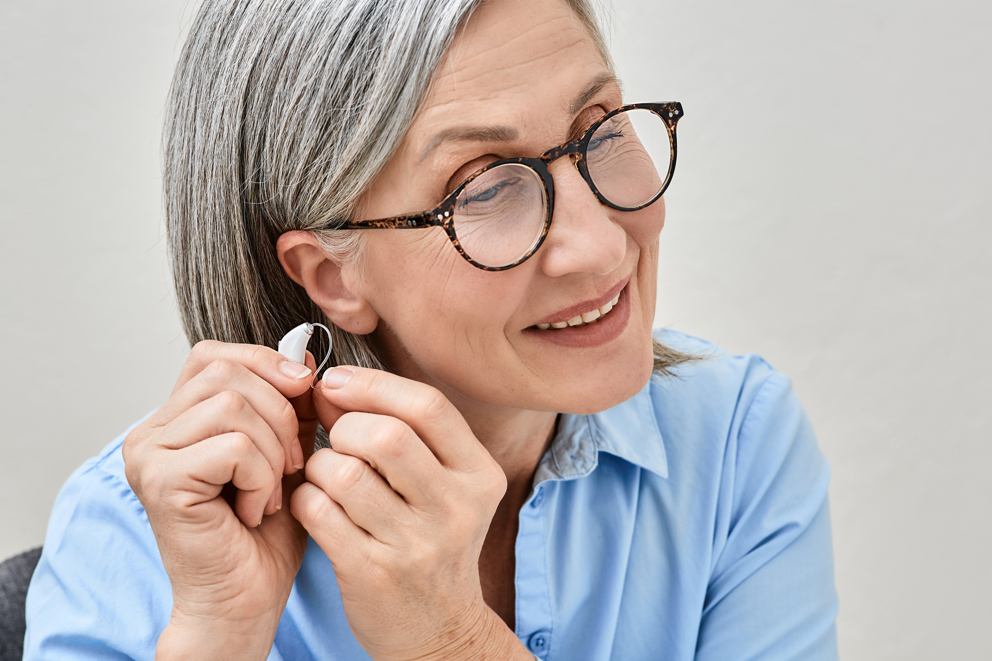
When people wear hearing aids, they can participate more fully in conversations, overcome distracting background noise in loud environments, and better hear their college professor in a crowded lecture hall, colleagues in a business meeting, and their favorite music or TV shows. Plus, untreated hearing loss is associated with many serious health issues, including increased depression, isolation, and cognitive decline. Include messaging about the benefits – and effectiveness – of hearing aids to encourage people with hearing loss to get them.
4. Spotlight The Cool Technology
Today’s hearing aids can be linked to an app that allows users to easily adjust the volume and settings. They can link directly to a cell phone for enhanced listening on phone calls and Zoom/Teams meetings. Innovative tech developments have improved audiology, allowing people with hearing loss to use hearing aids with Bluetooth technology, Artificial Intelligence, rechargeable batteries, and automatic translation services. The newest technologies have improved hearing aids’ features and functions, so people can hear more clearly and experience a variety of important benefits.
5. Showcase The New Look and Feel
The old, clunky, ugly, beige hearing aids are a thing of the past. Today’s hearing aids are much better looking, as well as sleek, comfortable, and technologically advanced. Not only has sound quality improved dramatically, but now there are a variety of styles to make today’s hearing aids more attractive and appealing. Promote how hearing aids are becoming more stylish and trendy, available in different colors, so customers can choose one that compliments their skin tone or style. Also, talk about how some hearing aid brands are making hearing aids more of a fashion statement, like glasses, by making fun, fashionable patterns and accessories for the devices. These messages will appeal to wider audiences, including younger demographics who are frequently preoccupied about their image and style.
6. Change How You Portray Hearing Loss
It’s important for people to see that hearing loss is not just something that happens to elderly people. Young celebrities with hearing loss include football player Derrick Coleman, Jr., Canadian musician Grimes, model and actor Nyle DiMarco, actor Rob Lowe, and actresses Halle Berry, Jane Lynch, and Millie Bobby Brown. Social media influencers – like former professional motocross racer Ashley Fiolek, “The Walking Dead” actress Lauren Ridloff, and TikTok sensation Chrissy Marshall – are helping to raise awareness – and “coolness” – of hearing loss and hearing aids. Consider spotlighting these well-known celebrities – and linking to their social media content – to demonstrate that these beloved actors, athletes, and influencers have hearing loss and are proudly wearing hearing aids.
7. Combat Common Fears and Misconceptions
People want companies to understand their needs, thoughts, expectations, hopes, and fears. Therefore, it’s in your best interest to use messaging that helps overcome people’s common concerns and demonstrates that you understand their needs. Many people worry about the hearing exam, so emphasize that hearing screenings aren’t painful. Cost is a concern for many, so spotlight the variety of price points and payment plans that you offer. Talk about how today’s hearing aids are sleek and technologically advanced, with better connectivity and enhanced functionality. Include messaging about how today’s hearing aids work well, and are better able to distinguish speech from background noise.
8. Review Your Existing Marketing Content
It’s important to review your existing marketing content – including your ads, website, social media posts, brochures, signage, etc. – and determine how it can be updated so it’s more inclusive. For instance, check the images and messages you’ve been using and determine whether they need to be updated to represent more diverse consumer groups. Are you using images that reflect a wide range of ages, races, body types, etc.? Are you showing people in a variety of contexts – at work and school, participating in activities, being active – and not just using images of older people sitting around looking frail? Inclusive images and language will be instrumental in attracting a more diverse group of patients to your clinic.
9. Look at The Bigger Picture
Your hearing practice should do more than just adding new images to your ads. You should incorporate diversity and inclusion into your company culture, and make it a business imperative. This effort must be more than just a simple Band-Aid and should be successfully integrated into your daily processes, language, and attitude. Diversity and inclusion messages should be included in everything that your clinic does – from how you talk to patients at appointments to how you market your practice and products. Inclusion should be a business strategy that’s prioritized and widely supported. This will drive positive business outcomes and improve key performance indicators (KPIs), like sales, conversions, and retention. Plus, it’s simply the right thing to do.
Auditdata Solutions
Raising Awareness, Improving Lives
As a leading provider of audiology solutions, we see it as our responsibility to raise awareness about the consequences of undetected hearing loss, help guide individuals to take the initial steps toward detection and treatment, and advise hearing care professionals on how to provide the best care experience.
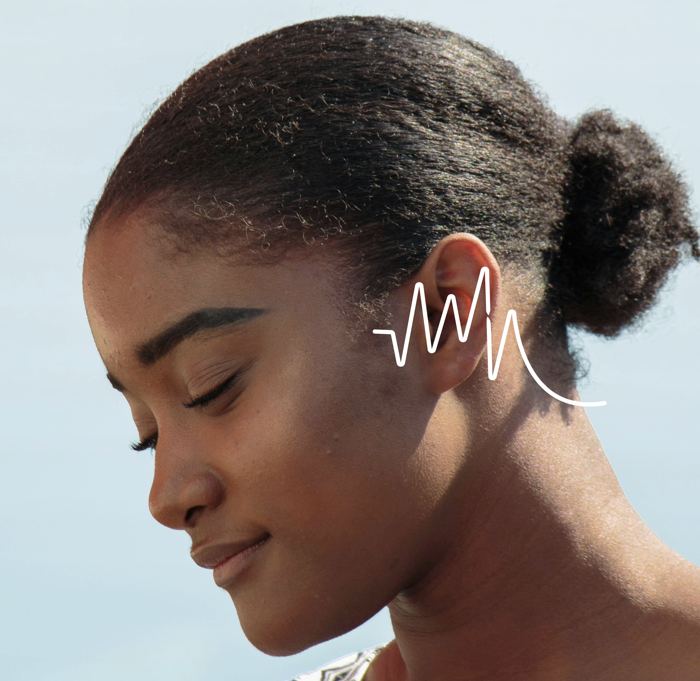
Other Blogs You Might Enjoy:
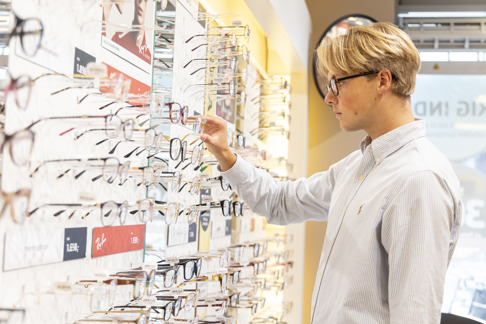
Exploring the Double Standard of Hearing Aids and Glasses
Why is there a stigma around wearing hearing aids, but not around wearing glasses? Eyeglasses were once a sign of age and impairment – remember the cruel old taunts of “four-eyes” – but are now seen as cool and trendy. Hearing aids should have a similar evolution: from stigmatizing burden to innovative, wearable tech.

Loud Music Contributes to Hearing Loss, Impacting 1 Billion Young People
Blasting your favorite songs on your headphones or attending live concerts could cause permanent hearing loss. In fact, loud music – and unsafe listening habits – may be contributing to hearing loss for more than one billion young people around the world.

6 Marketing Challenges That Can Derail The Success of Your Hearing Clinic
Marketing is an essential business function to help attract attention, generate interest, drive sales, and help differentiate your business. Don’t let marketing challenges derail your success.
Don't Miss Out On the Latest Insights On Audiology
Sign up today to receive exciting updates, tips, and the latest newsletters from Auditdata.
Resources
⭐️ Auditdata Blogs:
- Loud Music Contributes to Hearing Loss, Impacting 1 Billion Young People
- The Importance Of Monitoring Employee Hearing Health and How To Get Started
- Reaching the opportunities between optical- and hearing care
- Why no one wants to wear a hearing aid and what we can do to change that
- How Technology is Changing Audiology
⭐️ Are You Including Enough Diversity In Your Marketing?
⭐️ Design a hearing screening experience for any situation and location
⭐️ Ageism In Advertising: Common Stereotypes And How To Avoid Them
⭐️ Ageism Is Alive and Well in Advertising
⭐️ Breaking Stereotypes: Hearing Loss in the Media
⭐️ Hearing aids gain hipper reputation as "lifestyle" products after going OTC
⭐️ Untreated Hearing Loss in Adults
⭐️ Diversity in Advertising: A Guide to Inclusion
⭐️ The Power of Diversity, Equity and Inclusion in Advertising
⭐️ Brands Are Speaking Out on Black Lives Matter. How Are Consumers Going to Respond?
⭐️ The Hidden Risks of Hearing Loss
⭐️ Have You Heard? Audicus Launches Fashion Hearing Aid Collection

